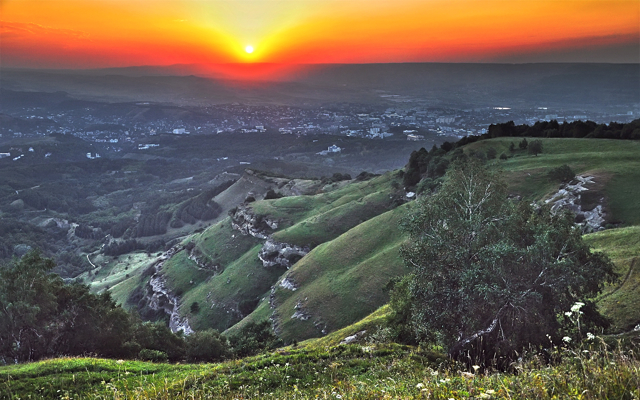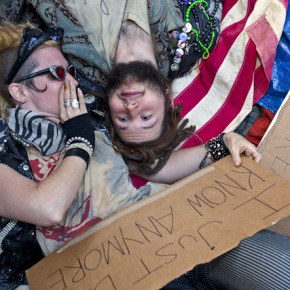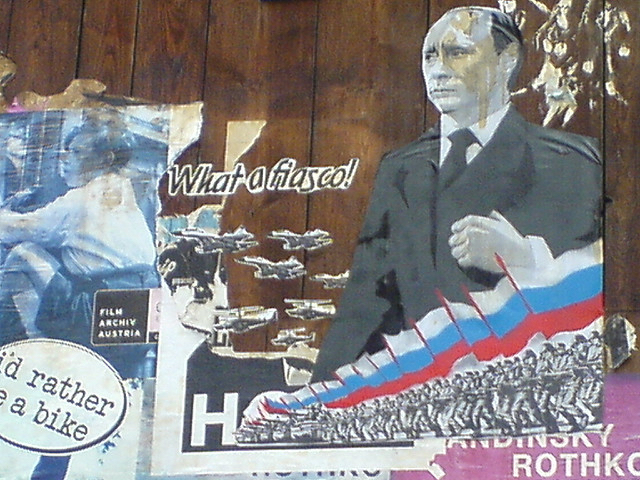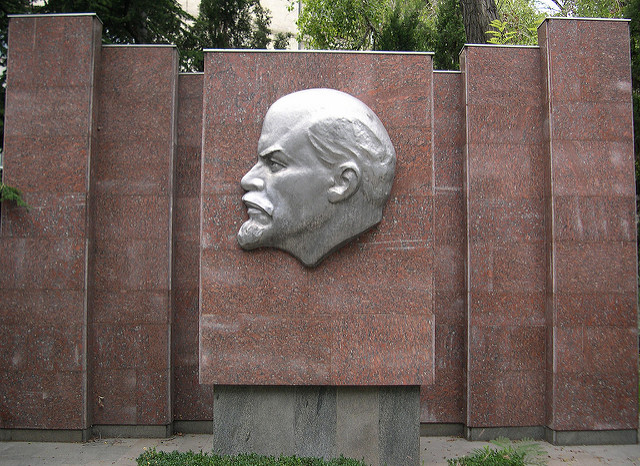Kislovodsk, or Sourwater, lies wedged between two autonomous Republics in the north Caucasus. With the anxious patriotism of the borderland, it’s aptly known as the city of Lermontov’s A Hero of Our Time. Kislovodsk’s effervescent Narzan spring water – “the drink of heroes,” according to its Kabardian name – is often tasted in souvenir glazed cups bearing stereotypical figures of Gortsy (“mountain people.”)
The exact taste of Narzan is one with which we need not concern ourselves, as the local architecture is a good enough distraction from it. With its narrow gothic windows and sandstone buttresses, the 1848 Narzan Gallery housing the spring could just as easily be found in the English city of Bath. The surname of the architect, Samuel Ivanovich Upton. clearly indicates an ancestral connection.
Who melts into whom varies with time, but Kislovodsk has always been a melting pot. Sergei sits in a small red booth barely bigger than himself, garlanded with photos of his company’s tour destinations. Half Armenian and half Russian, he had begun to learn his mother’s language in his early sixties. The Narzan Gallery is the first place he would recommend to a British visitor, he says, and asks my name and patronymic. I didn’t have a patronymic, I replied, but my middle name was Sebastian.
“With a name like Sebastyan,” he wondered aloud, “you could be an Armenian yourself!” Patronymics, it would seem, are perennially relevant here. Behind this thicket of cultural differences, a Circassian friend in Nalchik later identified what she saw as a kernel of truth in the matter. “Isn’t it odd,” she observed, with some relish “that you in the West have two names for yourself, whilst we have two for our families.”
An antique shop sells a rare collection of ethnographic ‘Caucasian Types’ postcards, clinically classified natives staring bleakly into the camera. A hundred years on, a wholesome range of peoples sell their wares in the central market, over the river, and up the hill past the abandoned Synagogue. An Uzbek-Korean sells Abkhazian Adjika, and pastries of various degrees of blandness – both Ossetian and Balkar – form little pyramids of carbohydrate in the midday sun. In the corner of a pawn shop, a clock bearing the Chechen separatist flag ticks away, ominously. Amidst these demographics, it is little wonder that Lermontov alluded to a Scottish Colony to the north of nearby Pyatigorsk.
On one of the mountain trails outside the city, a few miles downhill from Lermontov, musing in steel, at the view of Mount Elbrus, a star can be found carved into a cliff-face, partly obscured by shrubbery. The German-language inscription reads “Den gemordeten Helden [sic] der Februarkämpfe. Ӧsterreich.” Carved in 1937 – and forgotten in 2012 – it commemorates those killed in the Austrian February Uprising of 1934, during the Austrian Social Democrats were defeated in a short and bloody reprisal by conservative Chancellor Dollfuß. A small number of rebels escaped to Czechoslovakia, and a smaller number still to the Soviet Union, about whom little is known.
Alexander Kuznetzov of Vestnik magazine wrote that several were known to have taught in Kazan University, Tatarstan, during the 1970s. Some, it would seem, reached these mountains like so many before them, leaving this fading star in a foreign land.
“A black wooden cross o’er a precipice reigns,
It rots and it ages from tempests and rains.”
Mikhail Lermontov, The Cross on the Rock
Photograph courtesy of Wikipedia.






Beautifully written. Thank you.